12 Powerful Ways to Transform Your Body at Any Age

With every age milestone we reach, many of us feel that the best days of our physical health are behind us. At 30, maybe we still feel nearly unstoppable, but let's face it, after 40, it's pretty common to feel like we're speeding down a steep hill, maybe with a dumpster fire called "50" raging at the bottom.
The next stop is 60, and then? "Fuggedaboudit" might be the word that pops into your head.
If you're someone who hasn't been all that mindful about nutrition and exercise, a feeling close to panic might set in.
But Is it really that bad?
Not by a long shot.
No matter your age, your best, healthiest years can be ahead of you, if you're willing to do the work.
So when is the best time to get serious about your nutrition and exercise? Whether you're in your 30s, 40s, or 50s, the answer to that is easy: Right now. Now is always the best time to start. Until you're 6 feet under, it's never too late.
In this guide, I'm going to give you 12 essentials to transform your body at any age. These are NOT hacks. Forget about hacks. You can't hack your way to an awesome physique and better health.
Everyone knows that better nutrition and exercise are the big kahunas, but we need to figure out how to implement both. Without a plan to get there, you're navigating the terrain with no map, no compass, no GPS, and no guide. Good luck with that!
Hitting all 12 isn't necessary, but each one is important and the more of them that you can integrate into your daily routine, the better your results will be. Eventually, all 12 need to be addressed if you want to have sustained success in your body transformation journey.
First, Ask Yourself, What Are You Really Trying to Do?
You're looking to not just significantly slow physical decline but manage weight (whether it's gain, loss, or maintenance), rejuvenate your body, put on more muscle, improve flexibility and mobililty, and in the process, transform your physique. You should feel physically and mentally stronger and more resilient at the start of every day, no matter if you're in your 30s, 40s, 50s, or beyond.
While you're going through these 12 ways to transform your body, make a note of the "low-hanging fruit." Which one(s) can you begin to implement right now with the least amount of friction?
Implement change one step at a time.
Finally, don't think your way into taking action. Take action to change your thinking.
Here we go. Let's get after it.
The Importance of Habit Change
Body transformation and getting fitter, whether that means losing weight or gaining weight, involves habit change. One of the biggest mistakes people make that all but guarantees failure is trying to graft an extreme dietary regimen into their lives without making fundamental changes to their habits.
Social media is notorious for encouraging this kind of, dare I say it, ineffective and sometimes downright harmful approach.
If you don't want to change your habits, then that keto/carnivore/plant-based/flavor-of-the-week diet regimen will only work until you give up because the requirements were too much too soon, to integrate into your life.
So start with Habit Change. And the first step to habit change is this:
No Reason, No Purpose. Find Your "Why."

Don't be put off by number one. It's the first and most important step in the process of body transformation. If you have vague reasons for wanting to change your physical self, chances are that whatever diet, method, or protocol you choose to follow won't be sustainable. A good example of a weak "why": "I want to be able to look good in my favorite pair of jeans again."
We need to drill down into this. It's just a starting point. It's not a deep purpose.
Why is that so important? "If I lose some weight and look good in those jeans, I'll feel better about myself."
Oh really. Why will that make you feel better about yourself?
"I'll feel better about myself because my wife (or husband, significant other, etc) will notice."
Why is pleasing your S.O. important to you? "If my wife sees that I'm losing weight, getting fitter, and looking good in those jeans, she's less likely to worry about my health since she's been commenting about it lately."
Ah, so your wife is worried about your health. Just maybe you're getting older and she worries that the extra weight you're carrying might cause a heart attack.
Now we've unpacked this. You have a solid "why." You want to make sure you're around for a good long time for your family's sake.
That's why you want to transform your body. It's not just aesthetics. This is meaningful. Your family is your why. Your longevity matters.
It may sound extreme, but in reality, a solid why gives purpose and accountability to every one of the next 10 steps.
Let's move on to number 2.
Related: 10 "Diet Foods" That Are Worth the Hype, According to a Dietitian
Find Your Path: Set Clear, Realistic Goals

Now that you know why we're on this journey, you need to decide exactly what you want and when you want it. I suggest to all of my clients that they make a big, audacious one-year goal that might seem a little unreachable, and then divide that into a 6-month goal, a 3-month goal, and a one-month goal.
Now you're cooking with fire.
With the one-month goal in mind, decide what you think you need to do in the next four weeks to reach that goal. The first month's goal shouldn't be huge. Don't bite off too much. This is a baby step among many more baby steps.
Commit to doing one small thing each day. Then build on that, relentlessly, day after day.
You Don't Drink Enough Water
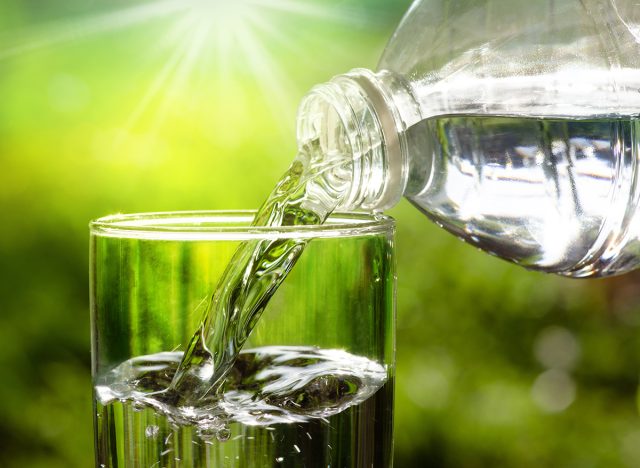
It's a fact: most people don't drink enough water. The majority of people are basically in a state of continuous under-hydration. And if you're trying to lose weight, dehydration combined with caloric restriction not only exacerbates your hunger, but makes weight loss significantly more difficult.
So rather than randomly try to consume more water throughout the day, let's set some specific "landmarks" throughout your day when you'll drink a full glass of water.
First, start your day, immediately after rising, with a glass of water. That's on your way to brushing your teeth or making your coffee, or whatever your habitual first action of the day happens to be. That glass of water just boosted your metabolic rate by 30% (water-induced thermogenesis), giving you a leg up right at the start of your day.
Boom, you just nailed a new daily habit. Baby steps!
Drink another glass of water before starting your lunch. Nope, you're not eating a single bite until you drink a glass of water. Bravo, since you woke up, you've added two full glasses of water that you weren't drinking before.
The same goes for dinner. No food until you've had at least one glass of water.
Once you've nailed down drinking at least these 3 glasses of water that you weren't drinking before, you've established a new daily habit. This is real incremental habit change that's going to pay big dividends. You've just taken a huge step toward curbing your hunger and losing weight. (Sources: Link, Link, Link)
Eating is a Thinking Activity: Practice Mindful Eating

If you're like a lot of people, your three daily meals might go something like this:
After rolling out of bed, showering, and doing the morning routine that has to be done (got kids? You know what that involves), maybe you sit down for a quick breakfast, but just as likely, you jump in your car and hit a drive-thru on the way to work, pick up a morning whipped Choco-Calorieccino and a sweet Danish, inhaling this during the drive or at your desk after you get to work.
Lunch? Another rush job. Supper? It could be take-out if you get home too tired to cook, and that meal, for many, is eaten while watching TV.
Whoa, cowboy/cowgirl. Let's take a few steps back.
The first step to mindful eating is to SLOW DOWN. I know, I know, you're in a hurry, you're too busy to slow down. Newsflash: nobody is too busy to slow down a meal. Here's how.
Set a timer and time your breakfast/lunch/supper. Write down how long it took to eat. Tomorrow, extend that by 3-5 minutes. To really make this count, slow down your eating speed.
That means you put down your knife and fork and don't take another bite until you've chewed and swallowed the food that's already in your mouth. Most of us pre-load the fork and shovel in more food while we're still chewing on the last load.
Cease and desist.
Don't worry about finishing the meal. If you run out of time at lunch, leave the remaining food for later. Make a point of sticking to your time, chewing your food thoroughly, and don't focus on trying to finish all the food you have on your plate/desk/wherever. Always stop when you feel 80% full.
Rinse and repeat. Every day for the next 2 weeks, focus on this. It doesn't have to be perfect. Maybe at the start, you only manage to do this for one meal each day for the week. The next week, try to do it for 2 or 3 meals a day.
You're already crushing it and we're only on number 4!
RELATED: 3 Easy Steps That Will Help Anyone Lose Weight and Look Great
Aim to Eat More Whole Foods, Less Processed Food
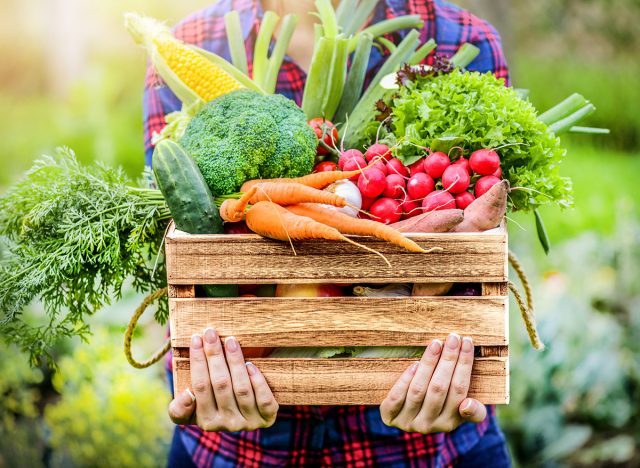
So simple, yet so hard. Our society exists mainly on a diet of processed junk. Walk down the aisles of any supermarket and you could easily get the impression that all the food there was produced in a factory.
Some people's plates never see a vegetable.
If you're one of those people, it's going to be well-nigh impossible to completely flip your world upside down and start eating only fresh whole foods right away.
Instead, gradually substitute a fresh food for something that's already in your meals. Maybe you only have time to grab a burger at lunch? Substitute a side salad for the fries.
Your breakfast might consist of sugary cereal and yogurt with "fruit" at the bottom (basically strawberry jam full of added sugar). Instead, buy plain yogurt and slice a couple of fresh strawberries into it, or a quarter of a banana. Put a few crushed almonds on top. That's another small step. Switch up the sugary cereal for one with no added sugar, or a piece of whole wheat toast.
You might be thinking that none of these changes are big enough to transform your body. Where's the Paleo? Where's the Keto? Aren't I supposed to cut my food intake to half a puffed rice cracker and a glass of mineral water each day?
Not a chance.
Make a small change with every meal and focus on maintaining that new habit. Small, gradual changes are where the magic happens.
More Protein, Better Results
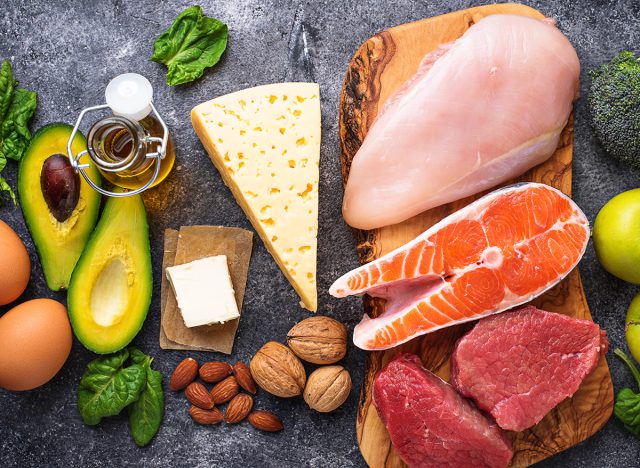
This is a biggie. Most people, despite what you may have read in the mainstream media, under-consume protein. Yes, a significant percentage of Americans over-consume total calories, but total protein consumption is generally too low. For aging adults, this is doubly important because as people age, their activity levels decrease but paradoxically, they need more protein to preserve muscle mass and mitigate weight loss.
A big plus is that protein will make you feel full more quickly during a meal while also increasing satiety (feeling full between meals). This is essential to help reduce between-meal snacking.
If you want to transform your body, more protein is a must. No, it's not going to harm your kidneys. That myth has been soundly disproved. For people with healthy kidneys, extra protein is highly beneficial. The USDA guideline of .8g per pound of bodyweight has been roundly dismissed as insufficient. That number reflects the bare minimum established 50 years ago to sustain baseline health.
Instead, aim for 1g to 1.5g per pound of bodyweight, depending on your weight and activity level. (Sources here: Link, Link, Link, Link, Link)
Quantities Matter
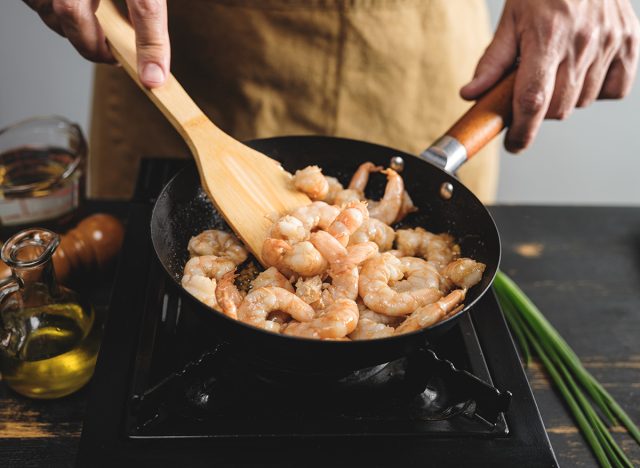
This sounds too obvious, but what's the easiest way to way to accomplish this?
I like to use two related techniques with my clients. Instead of tediously weighing food with a scale (try bringing THAT into a restaurant and planting it in the middle of the table. "Who's the weirdo at table 8?), we use hand portions. What does that mean?
- 1 serving of protein = 1 palm
- 1 serving of vegetables = 1 fist
- 1 serving of carbs (starches) = 1 cupped hand
- 1 serving of fats = 1 thumb
As a starting point for a meal, an average-sized male will have 2 palms of protein, 2 fist-sized portions of vegetables, 2 cupped handfuls of carbs, and 2 thumbs of fats.
Females start with half of these quantities. Keep in mind that these are general guidelines. The amounts will vary depending on activity levels and body size.
You can get guidance on individualized portion requirements from online calculators, apps, or better yet, a nutrition professional.
The other method that is dead easy is the Plate Method. Your plate is divided this way:
Half the plate is filled with vegetables. The other half of the plate is half protein. The remaining half is divided equally between vegetables and fats. This is the breakdown:
- ½ vegetables
- ¼ protein
- ⅛ starches
- ⅛ fats
It's a rough guide but works best for supper when you're likely using the same sized plate every day.
Remember: you must maintain a caloric deficit to lose weight. Hand measurements or the plate method are low-friction ways to get there.
Related: I Lost 45 Pounds With This Simple Meal Plan
You Need a Map: Track Your Meals
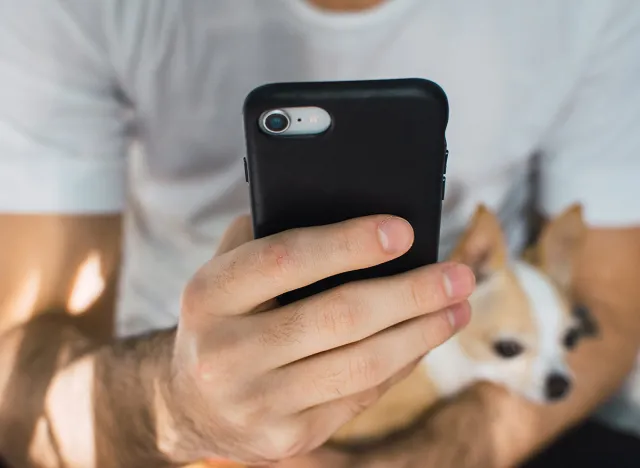
Tracking your meals is one of the most effective tools you can use to boost your efforts to lose weight and transform your body.
You'd be surprised at how useful meal tracking is. It gives you a sense of perspective. There are various apps available that make this super easy. Several of them allow you to attach photos of your food to each daily food log, and those photos are an effective way to review and monitor your food consumption. If you're a snacker, you just might be shocked at the amount of food you consume just through snacking.
All those photos of snacks may be an eye-opener. Snacking is one of the big obstacles to transforming your body. Tracking and taking photos can help to reduce it.
The Body-Transforming Magic of Quality Sleep
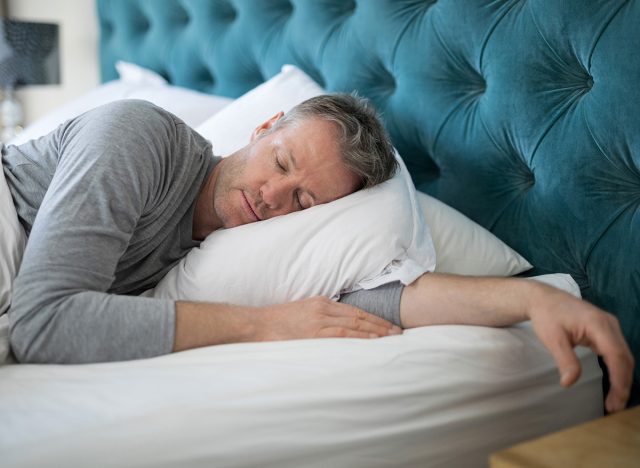
Sleep is probably the most overlooked aspect of body transformation. Fact: sleep deprivation increases appetite the following day. And if you're chronically sleep-deprived, chances are you also have difficulty controlling your appetite and weight.
There are multiple reasons for this, but essentially, appetite-regulating hormones are affected by lack of sleep.
How can you get deeper, longer sleep? Start with your sleep ritual. If you're one of the millions who use your digital device shortly before going to bed, change that habit. The blue light from device screens is known to have an effect on sleep quality by influencing the production of melatonin, a hormone necessary for restful sleep. So either stop using your smartphone at least 60-90 minutes before going to bed or set a timer that alters the screen light to a warmer hue.
(Sources here: Link, Link, Link)
Exercise: Get Moving!
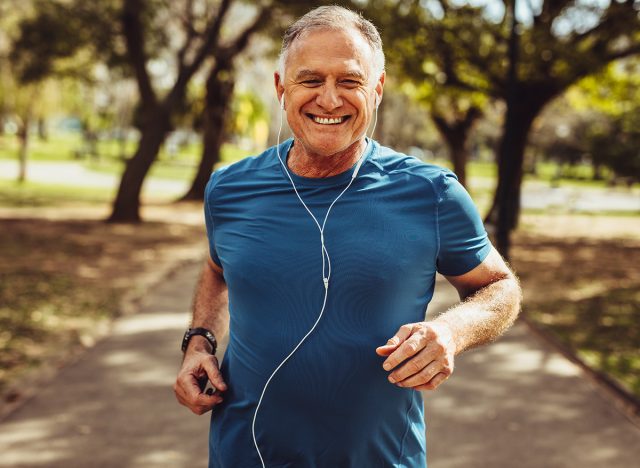
Now we get to the Big Daddy, exercise. Yep, exercise is a powerful way to transform your body composition at any age. But there's a pretty big caveat: You can't out-train a bad diet. And that's why I left exercise for Number 9. Far too many people mistakenly believe that if they go running a few times a week or do HIIT workouts til they drop, they can mosey into a pizza joint several days a week and have at it.
Don't be that person. Developing an exercise routine is a must, in conjunction with gradually improving your eating and lifestyle habits. The previous 8 points address that.
I already hear you saying "But I don't have time to exercise!"
Is that so? If you take just 10 minutes out of your day, you can fit in a quick workout, even without gym access. It can even be done in your bedroom or living room right after you wake up in the morning. Body weight workouts are great for people who are pressed for time.
If you have access to a gym or equipment at home, the only thing stopping you is you. If you're not sure what you should do, hiring a competent trainer or coach is always the best way to get started. (Source here: Link)
Manage Your Expectations
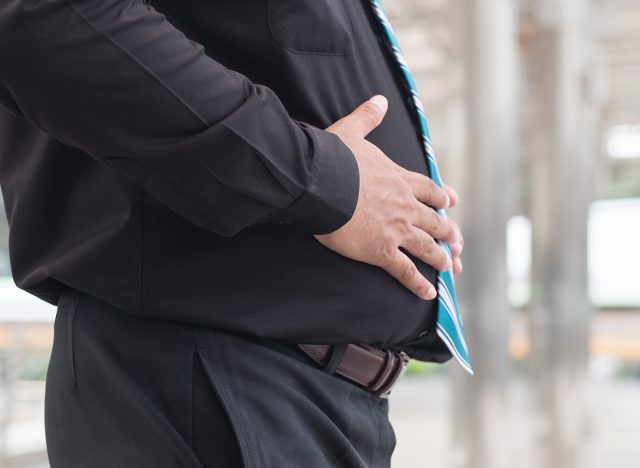
Now we're really getting to the nitty-gritty. Unrealistic expectations have derailed many a body transformation effort. If you've gradually put on weight over a period of 5, 10, or 15 years, don't be too surprised if those extra pounds don't melt off in 3 months of weight loss effort.
Don't expect too much too soon.
Conversely, if you're someone who's been thin and wiry your whole life and are trying to put on some muscle, be patient. Gaining or losing weight will take time.
This harkens back to Point 2, "Setting Realistic Goals." Review your goals when you feel stuck and make adjustments.
The last thing I'm going to talk about is critical:
Tomorrow is a New Day: Manage Setbacks
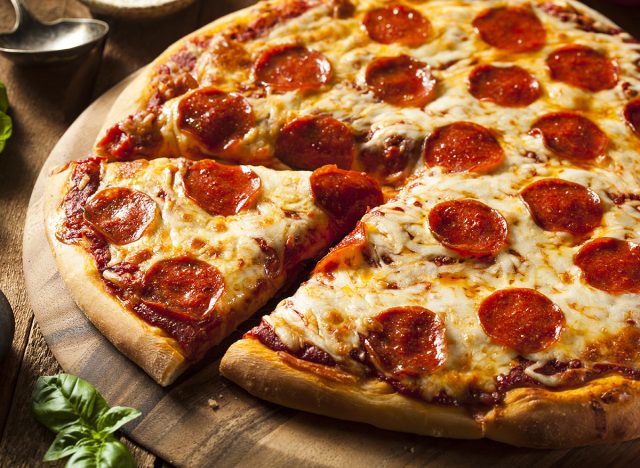
Here's a typical scenario I've seen with individuals who are following a rigid diet protocol ("clean" eating, Paleo, among others). The restrictions are followed to the letter for days or weeks, and then one particular day, you go out for lunch and eat something that is "forbidden" according to the restrictive diet you're following.
Boom. The baby is thrown out with the bath water and it's "well, I ate something I'm not supposed to, so screw it, I failed, damn the torpedos."
First off, just because you had a couple slices of pizza doesn't mean you "failed." You had some pizza. So what? Your next meal is an opportunity to get back on course. And tomorrow is a new day. This is "flexible dieting" and believe me, it works. Don't let a minor setback sink your efforts and kill your desire to transform your physique. Review your goals, take a breath, and keep going.
Some Questions You Might Be Asking
Q: How many months will it take to transform my body?
A: This is a highly individual question. It depends on a variety of factors: present body fat percentage, lifestyle, habits, and much more. To get a clearer idea, it's best to consult a nutrition professional.
Q: What kind of exercise is best for body recomposition or transformation?
A: A combination of resistance training, HIIT, and some cardio works best. Don't exclude resistance training. Increasing muscle mass is an absolute necessity for meaningful physique transformation.
Q: Can I transform fat into muscle?
A: Fat is not "transformed." Your body will use fat as fuel if you're in a calorie deficit. Muscle is increased through resistance training.
Final Word From the Expert
Body transformation is possible at any age. Attack it systematically and methodically and you'll see results that you never imagined possible. Don't let yourself be overwhelmed or discouraged by the seeming impossibility of the task. If you look hard enough, you'll see examples of people everywhere, of every age, who have transformed their bodies through focus and simply doing the work. With a clear why, specific goals, and a gradual approach, you can achieve a life-changing transformation. If you enjoyed this article, don't miss I've Tried Nearly Every Diet and This is the #1 Best for Weight Loss For Me.
💪🔥Body Booster: Start keeping a record of your daily meals. It's a powerful strategy that can significantly enhance your weight loss journey and body transformation efforts.
Mark Dean Edwards is a nutrition coach and CrossFit trainer based in Tokyo, Japan.




